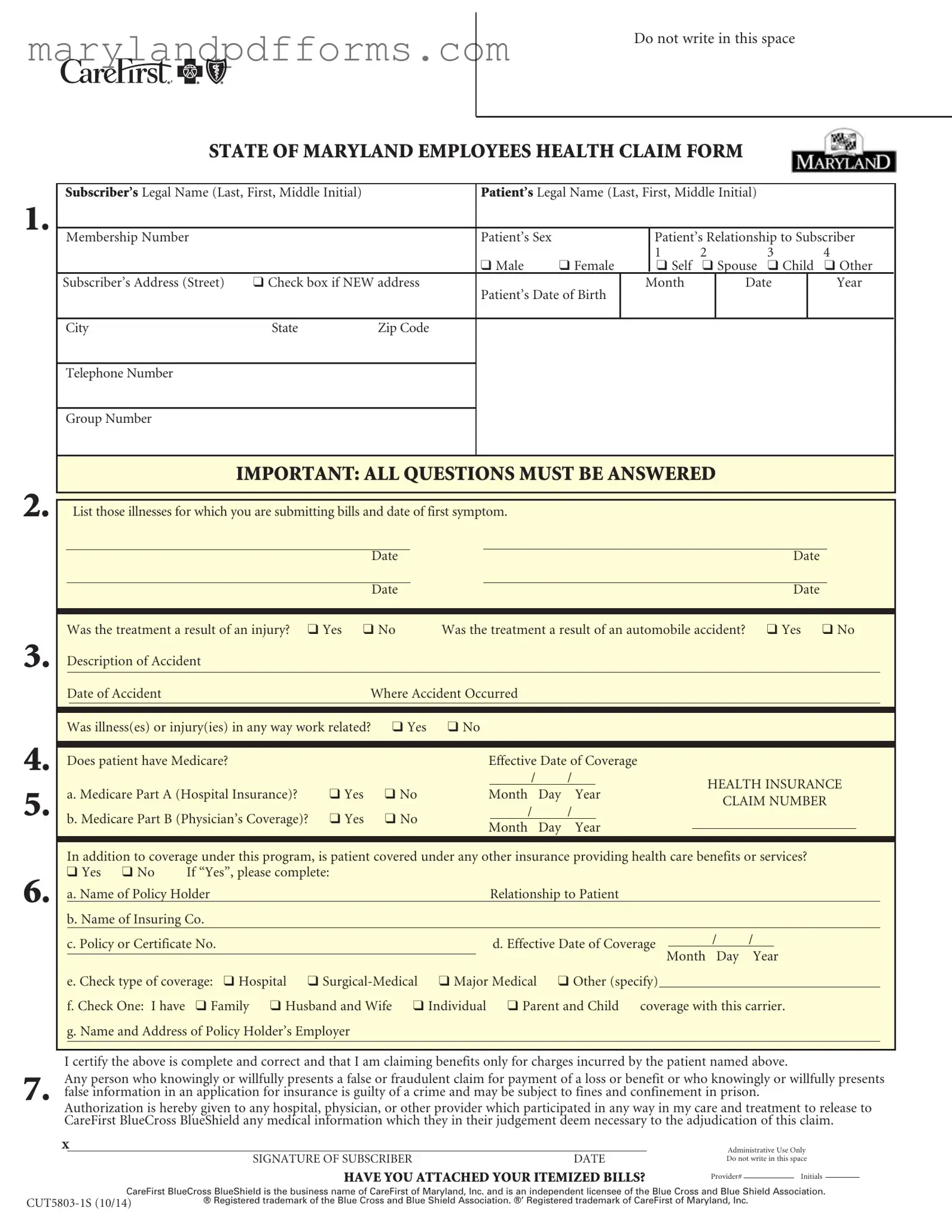The Maryland State Claim form is designed for members of the State Employees Health Plan to submit claims for health care services received. This includes claims for services rendered by non-participating providers, as participating providers typically bill CareFirst BlueCross BlueShield directly. The form ensures that all necessary information is collected for processing the claim efficiently.
To complete the claim form, the following information must be provided:
-
Subscriber’s and patient’s legal names
-
Membership number and group number
-
Patient’s date of birth and sex
-
Details about the illness or injury, including dates of symptoms
-
Information regarding any other insurance coverage
-
Itemized bills from the provider
All questions on the form must be answered to avoid delays in processing.
When submitting a claim, it is essential to attach itemized bills that include:
-
Provider’s full name, degree, address, and phone number
-
Patient’s full name and descriptions of services provided
-
The date each service was rendered
-
The provider’s diagnosis or the patient’s chief complaint
-
The total amount charged for each service
Additionally, any bills in a foreign language must be translated into English, and foreign currency should be converted to U.S. dollars.
What should I do if I have other insurance coverage?
If the patient has other insurance coverage, including Medicare, it is important to submit a copy of the payment statement from that insurance carrier along with the claim. This statement may be referred to as an “Explanation of Benefits” or “Summary of Benefits.” Providing this information helps ensure that the claim is processed accurately and promptly.
How can I ensure my claim is processed without delays?
To avoid delays in processing your claim, ensure the following:
-
All sections of the claim form are accurately completed.
-
Itemized bills are included and meet the specified requirements.
-
Only one claim form is submitted per patient.
-
Any required pre-authorizations are obtained, especially for specific therapies.
Keeping a copy of your submitted claim and bills for your records is also advisable.
